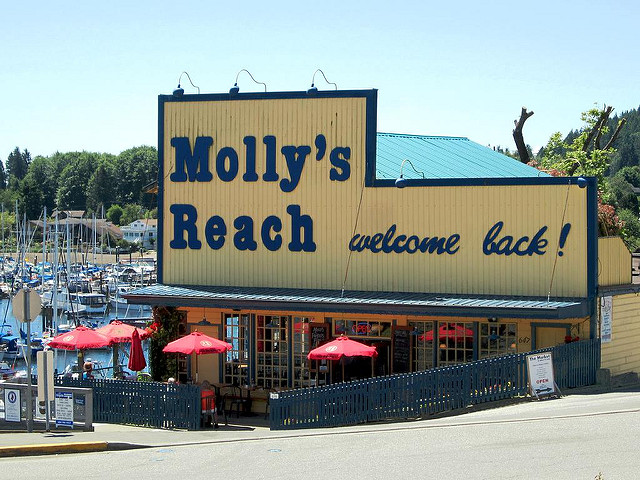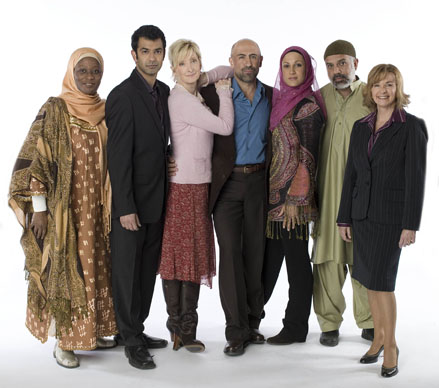King of Kensington was a CBC sitcom that ran for 111 episodes from 1975 to 1980. Actor Al Waxman played Larry King, the titular “king” of Toronto’s vibrant and multicultural Kensington Market neighbourhood. Created by Perry Rosemond, the series was a major success both in Canada and internationally. It regularly drew close to 2 million weekly viewers. Toronto Star TV critic Antonia Zerbisias called it “the single most important entertainment series ever produced in English-speaking Canada” because it represented the best of Canada to Canadian and international audiences.

Premise and Setting
The Canadian Broadcasting Corporation (CBC) conceived the idea of a sitcom set in Kensington Market in 1974. The idea was to show the everyday lives of working-class Canadians living in an urban, multicultural environment. Though the series was mostly lighthearted and intended to be a straightforward comedy, it was also meant to address issues relevant to the newcomer, immigrant experience.
King of Kensington concerned the life of Larry King, the owner of a corner store in Kensington Market who regularly worked to solve the problems of his neighbours. Larry King was the community’s unofficial ombudsman, chief orator and activist. Key to King’s success as a problem solver was his understanding nature.
The show’s setting — a changing multicultural urban neighbourhood in the fast-growing Toronto of the mid-1970s — was a key feature of the program as well. Multiculturalism was built into the program by virtue of a diverse main cast. Larry King’s wife was Protestant, his mother Jewish, and his best friends were Black and Italian. The mixed multicultural reality of urban Toronto had rarely been seen on Canadian television up to that point. And while the show was often compared to All in the Family, Larry King's political views were unabashedly liberal.
Each episode was filmed just one week before airing, which allowed it to be more topical and political than other sitcoms of the era. The program was sold to markets outside of Canada, including several American markets.
Cast
Al Waxman played the lead role of Larry King. Adding to the authenticity of the program, Waxman had grown up in Kensington Market. Fiona Reid played his wife Cathy for the first three seasons. Helene Winston played his mother, Gladys. Ardon Bess played his friend Nestor “the Jester” Best. And Bob Vinci played friend Tony “the Duke of Milan” Zarro.
In addition to the central cast, several notable Canadian actors appeared on King of Kensington. Mike Myers made his acting debut at the age of 12 in a 1975 episode. Many years later, Myers paid tribute to the show by naming a character in the first Austin Powers film Vanessa Kensington. Canadian actor Saul Rubinek also appeared on the show, and several SCTV cast members made cameos. These included John Candy, Andrea Martin, Eugene Levy, Dave Thomas, and Joe Flaherty.
Al Waxman
Al Waxman was the son of Jewish immigrants from Poland. His intention was to become a lawyer, but he became ill and missed several months of schooling. Waxman decided to pursue acting instead, despite his parents reservations. He grew up in a small apartment above a poultry shop, near the intersection of Spading and Nassau in Kensington Market. The establishing shots of the program’s intro were filmed just a block away, at Nassau and Augusta.
Waxman had been working as a director with the CBC, with only a few small acting gigs under his belt, when he was approached to direct King of Kensington. After reading the pilot script, he petitioned to be given the role.
Following the series, Waxman became familiar to American audiences as Lt. Bert Samuels on the popular CBS police procedural Cagney & Lacey (1982–88). But Larry King from King of Kensington remains Waxman’s signature Canadian role, one that made him a household name in Canada. He won an ACTRA Award for his performance and received the Earle Grey Award for lifetime achievement in Canadian television at the 1998 Gemini Awards. Waxman was made a Member of the Order of Ontario in 1996 and the Order of Canada in 1997. He was posthumously inducted into Canada’s Walk of fame in 2016.

Social Impact
King of Kensington’s popularity helped reinforce and legitimize the concept of multiculturalism and national unity in an era when the former idea was in its infancy, and the latter was being tested by Quebec nationalism.
Al Waxman and his family regularly attended events across Canada promoting national unity during the show’s five-season run. Waxman believed that King of Kensington reflected the best of Toronto, and that Toronto reflected the best of Canada. Waxman’s widow, Sara, said that he received letters from Canadians who learned to speak English watching King of Kensington.
Commenting on the impact of the show following Waxman’s death in 2001, Toronto Star TV critic Antonia Zerbisias said Waxman’s portrayal of the gentle and generous Jewish shopkeeper from Toronto was the best cultural ambassador Canada ever had.
Legacy
A bronze statue in tribute to Al Waxman was erected after his death in 2001. The monument is located in Toronto’s Bellevue Park in Kensington Market.
King of Kensington’s impact on Canadian pop culture can be found in references to it in other Canadian television programs. Don McKellar’s CBC sitcom Twitch City (1998–2000) was not only set in Kensington Market, but in the first episode lead character Nathan kills a homeless man played by Waxman with a tin of cat food. More recently, the popular CBC sitcom Kim’s Convenience (2016–21) has been called King of Kensington’s heir apparent.

 Share on Facebook
Share on Facebook Share on X
Share on X Share by Email
Share by Email Share on Google Classroom
Share on Google Classroom







